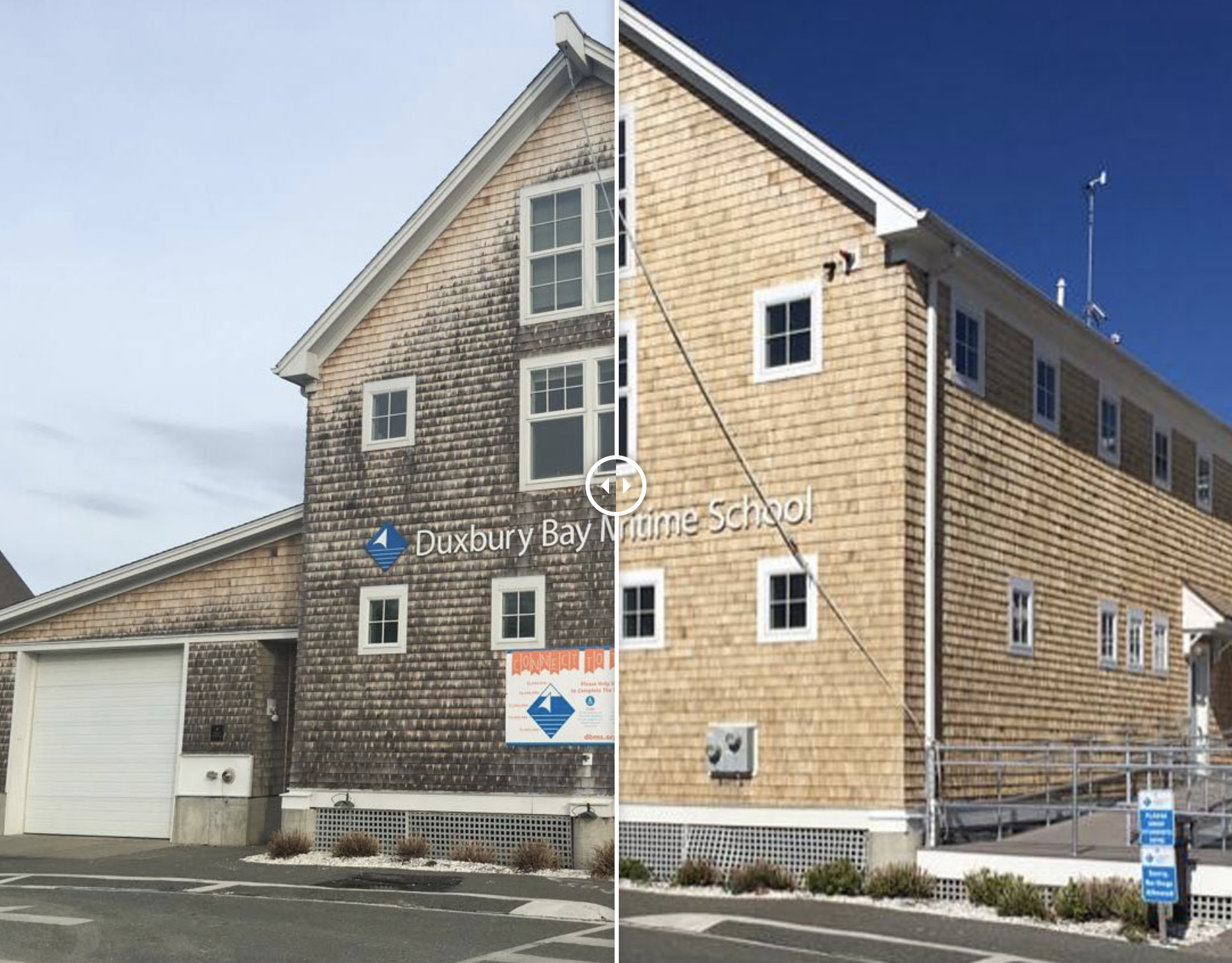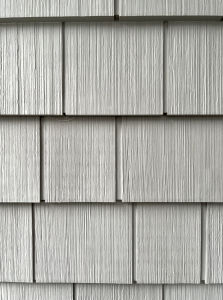
Weathering Your Cedar Shingles to Gray on the South Shore
Posted on February 3, 2021
How to weather cedar shingles:

3 key takeaways:
Applying bleaching stains to freshly power-washed shingled homes will turn the shingles a “weathered gray” in 6-12 months.
Both red and white cedar shingles will turn gray when treated with bleaching stain. In the end, red shingles will be a bit darker gray than the white cedar.
Bleaching stain is activated by the sun and salt air, so shaded areas may end up a darker gray than areas in direct sunlight.
Note: In this article, the words “shakes” and “shingles” are used interchangeably, but understand that shakes tend to be thicker, hand split, and spaced farther apart, whereas shingles are machine-made, thinner, and spaced closer together.
If you need professional help with a cedar shingle project, see our cedar shingle services information or schedule a free visit to your home to look at your project here.
Question: Can you help me achieve that lovely “Weathered-Gray Patina” on my home’s shakes and shingles without waiting years?
Answer:
Lots of our South Shore, Plymouth, and Boston-area Clients live in homes where at least one side of the house includes cedar shakes or shingles. Some people like to apply a solid or semi-translucent stain to their shingles to add a bit of color or prevent the shingles from weathering altogether. But many of our customers ask us to help them achieve that wonderful “Nantucket Gray “weathered “patina” on their cedar shingles that are so popular on South Shore coastal homes in Scituate, Duxbury, Cohasset, Hull, Hingham, Plymouth, Dartmouth, and surrounding coastal towns.
Question: Do both red cedar and white cedar shingles turn gray?
Answer:
If treated with bleaching stain, both red and white cedar shingles and shakes will turn a lovely gray. In the end, the white cedar will turn a slightly lighter shade of gray than red cedar shingles will.
The first step: Power washing your shingles:
Power washing using bleach or detergent removes the dirt, mildew, and mold so common to shingles in the Boston-area. A good power wash can make shingles look refreshed with a cedar color.

The secret ingredient to “Nantucket Gray” Shingles: Bleaching Stain.
After power washing, we apply bleaching oil or stain to the shingles to hasten the graying.
The original bleaching oil is relatively clear when first applied, and after months of sun and rain exposure, the bleaching crystals in the stain weather the surface of the wood to achieve the gray patina so common on Cape Cod, Nantucket, and other coastal towns.
Question: How fast will Bleaching Stain turn my shakes or shingles gray?
Answer:
Because bleaching stain requires sunshine to change your shingles’ color, it depends on the amount of sunlight that hits your home. On the South Shore, it takes about six months- 12 months to turn cedar shingles from their natural color to gray. Remember, the sides of your home that receive more sun will gray first (see below for more on this).
Question: Will the graying of my cedar shingles be uniform?
Answer:
Because the bleaching stain only hastens what would happen naturally, the amount of sun that a house receives makes a real difference in the final graying that occurs on your home’s shingles. If one side of your shingled home gets more sun than another side, your shingles may fade to different shades of gray on each side. Conditions like shaded overhangs and pergolas can also provide shade that makes the graying of the shingles uneven – especially at first.
Question: How often should I treat my shingles or shakes with bleaching stain?
Answer:
We recommend a powerwash and recoating of bleaching stain every 4 to 7 years to keep your shingles protected for years to come. Bleaching stain protects your shingles, so it helps them retain their durability.
Question: Can I turn my shingles or shakes gray faster than the 6-12 months it takes for bleaching oil to work?
Answer:
Yes, and this is useful if the shingled building or home you’re staining needs to host a wedding or event and you want the home looking gray immediately. And while gray translucent stain doesn’t give exactly the same look as bleaching stain does, it’s a pretty close match.
To achieve the “immediate” gray look during the first application we recommend a mix of 50% of Cabot’s Bleaching stain and 50% of Cabot’s Bleaching oil. After the shingles weather, the thin coating of stain wears off and the bleaching crystals begin to create the natural gray patina. The two local suppliers of Cabot’s bleaching oil and Cabot’s Bleaching Stain are Lowes Home Improvement and Goodrich Lumber in Kingston, Massachusetts.
Remember that when using the above technique, the gray color will be consistent (not mottled) during the initial phases of the coatings life.
Question: Is there a way to keep my natural, new shingles or shakes looking NEW and NOT weathered?
Answer:
Yes, we can apply a solid-stain in a color that closely matches the natural cedar color. This prevents the shingles from discoloring and keeps them looking new. Of course, the look will not be exactly the same as natural shingles, but the stained color will be close, especially when viewing them from a distance. Solid stains have solid particles in them, but unlike with paint, the solid stain allows the wood’s grain to peek through. Solid stains offer great protection because they block UV rays from the sun and are great at shedding water.
Question: Is there a house shingle that requires NO maintenance?
Answer:
Yes, vinyl shingles that look like cedar look fantastic and require no maintenance. Many companies use real wood shingles to make their molds for composite replicas, so their vinyl shingles have authentic-looking wood grain and even the splits you’d find in real wood shakes. In general, the more expensive brands of composite shingles look more authentic they look.

Question: What’s that black stuff on my cedar shingles?
Answer:
The black is “plant growth” – a nice way of saying “mold, mildew or fungus.” The way to get rid of it is by power washing your shingles.
Question: I have some shingles missing from my home, and some are also rotted. Do you replace shingles?
Answer:
Yes, we have carpenters on staff that will replace your missing or rotted shingles or shakes before we paint.
If you have questions about cedar shingles or want a quote to have yours treated, email [email protected]. We’re happy to answer your questions even if you’re doing the project yourself.
< BACK TO OUR INDEX OF ARTICLES, TIPS, AND ADVICE
You might also like to read:
Our 20-second quiz – find out if your home needs painting, or not
South Shore and Boston-area Historical Colors
Our carpentry, shingles and wood rot repair services for your Boston-area home





